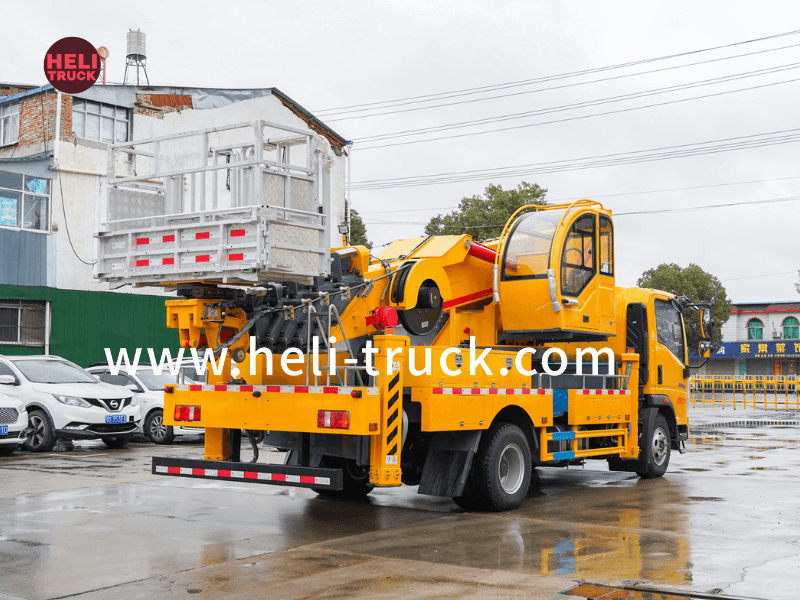Introduction
In the realm of waste management, garbage compactor trucks play a crucial role in collecting and compacting solid waste efficiently. These specialized vehicles are designed to streamline the waste collection process, reduce the volume of waste, and ultimately contribute to a cleaner and more sustainable environment. In this comprehensive guide, we delve into the intricate world of garbage compactor truck design, exploring the various components, mechanisms, and innovations that make these vehicles indispensable in modern waste management systems.
Historical Evolution of Garbage Compactor Trucks
The concept of compacting waste to optimize collection and disposal dates back to the early 20th century, with the first known patent for a garbage compactor truck filed in the United States in 1936. Over the decades, advancements in technology and engineering have transformed these vehicles from simple manual compactors to sophisticated, hydraulically powered machines capable of handling large volumes of waste efficiently.
Key Components of Garbage Compactor Trucks
Garbage compactor trucks consist of several key components that work in tandem to facilitate the collection, compaction, and transportation of solid waste. These components include the compactor body, compaction mechanism, hydraulic system, and control panel.
1. Compactor Body: The compactor body is the main structure of the truck where the waste is collected and compacted. It is typically equipped with a hopper at the front to receive the waste and a storage compartment at the back to hold the compacted waste before disposal.
2. Compaction Mechanism: The compaction mechanism is the heart of the garbage compactor truck, responsible for compressing the waste to reduce its volume. This mechanism may consist of a blade, ram, or auger that pushes the waste towards the rear of the compactor body, compacting it as it moves.
3. Hydraulic System: The hydraulic system powers the compaction mechanism and other moving parts of the garbage compactor truck. It consists of a hydraulic pump, cylinders, valves, and hoses that generate and control the hydraulic pressure needed to operate the compactor efficiently.
4. Control Panel: The control panel is the interface through which the operator can monitor and control the various functions of the garbage compactor truck. It typically includes switches, levers, and gauges that allow the operator to start and stop the compaction process, adjust the compaction pressure, and monitor the waste level in the compactor body.
Types of Garbage Compactor Trucks
Garbage compactor trucks come in various types and sizes to cater to different waste management needs. The most common types of garbage compactor trucks include:
1. Rear Loader Compactor Trucks: Rear loader compactor trucks are equipped with a compactor body at the rear, allowing waste collectors to load the waste through a hopper at the back of the truck. Once the waste is compacted, it is stored in the rear compartment for disposal at a waste management facility.
2. Tow truck vehicle recovery reliability : Front loader compactor trucks feature a front-loading mechanism that allows waste collectors to lift and empty large dumpsters or bins into the compactor body. This type of truck is commonly used for commercial and industrial waste collection.
3. Side Loader Compactor Trucks: Side loader compactor trucks have a hydraulic arm or lifter on the side of the vehicle that can pick up and empty waste containers into the compactor body. These trucks are often used for residential waste collection in urban areas with narrow streets.
Innovations in Garbage Compactor Truck Design
Advancements in technology and sustainability initiatives have driven innovations in garbage compactor truck design, leading to more efficient, environmentally friendly, and user-friendly vehicles. Some of the notable innovations in garbage compactor truck design include:
1. Automated Compaction Systems: Automated compaction systems use sensors and computerized controls to optimize the compaction process, ensuring maximum efficiency and waste reduction. These systems can adjust the compaction pressure based on the type and volume of waste being collected.
2. Telematics and GPS Tracking: Telematics and GPS tracking systems allow waste management companies to monitor the location, route, and performance of garbage compactor trucks in real time. This technology enables better fleet management, route optimization, and improved customer service.
3. Alternative Fuel Options: In line with sustainability goals, garbage compactor trucks are increasingly being designed to run on alternative fuels such as compressed natural gas (CNG) or electric power. These cleaner fuel options help reduce emissions and environmental impact.
4. Safety Features: Modern garbage compactor trucks are equipped with advanced safety features such as backup cameras, proximity sensors, and automatic braking systems to enhance the safety of both operators and pedestrians during waste collection operations.

Case Studies: Successful Implementation of Garbage Compactor Truck Design
Several cities and waste management companies around the world have successfully implemented innovative garbage compactor truck designs to improve waste collection efficiency and sustainability. One such case study is the city of Singapore, known for its world-class waste management system that includes state-of-the-art garbage compactor trucks equipped with automated compaction systems and real-time monitoring technology. By leveraging these advanced features, Singapore has been able to reduce waste collection costs, minimize environmental impact, and enhance overall service quality.
Conclusion
Garbage compactor trucks play a vital role in modern waste management systems, enabling efficient collection, compaction, and disposal of solid waste. Through continuous innovation and advancements in design, these specialized vehicles have become more sustainable, user-friendly, and effective in addressing the growing challenges of waste management. As technology continues to evolve, the future of garbage compactor truck design holds promise for further improvements in waste collection efficiency, environmental impact, and overall sustainability.
